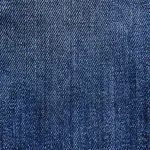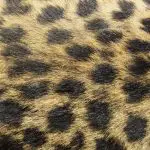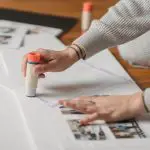When you think about DIY home projects, fabric tape might not be the first tool that comes to mind, but it can be surprisingly effective. You can use it for everything from simple hemming to more creative decor ideas, making it a valuable addition to your toolkit. Selecting the right tape for your specific needs is crucial, though, and understanding its various applications can really elevate your projects. Curious about how to maximize its potential? There are techniques and secrets that can transform your approach to crafting and repairs.
Table of Contents
Key Takeaways
- Choose the right fabric tape based on adhesive strength, width, and fabric compatibility for effective results in your projects.
- Use fabric tape for quick hemming, patching, and attaching embellishments without sewing for easy DIY fixes.
- Prepare surfaces properly by cleaning and drying them to ensure optimal adhesion before applying fabric tape.
- Secure fabric pieces with tape instead of pins to maintain alignment during sewing, especially for delicate materials.
Choosing the Right Fabric Tape
When choosing the right fabric tape for your DIY home projects, consider factors like adhesive strength, width, and the type of fabric you'll be working with.
Start by assessing the adhesive strength. If you're working on a project that requires a strong bond, look for a tape specifically designed for heavy-duty use. On the other hand, for lighter fabrics or temporary holds, a standard adhesive might suffice.
Next, think about the width of the tape. Wider tapes can cover more area and provide better support for larger projects. However, if you're working on detailed designs or smaller seams, a narrower tape will give you more precision.
Basic Applications for Fabric Tape
Fabric tape can be used in a variety of DIY projects, from hemming curtains to creating decorative accents on clothing.
One of the simplest applications is hemming. If you've got a pair of pants or curtains that need a quick fix, you can cut the fabric tape to the desired length and press it into place. This method saves you time and eliminates the need for sewing.
Another useful application is patching. If you've got a small tear or hole in a fabric item, you can use fabric tape to cover it up. Just cut a piece that's slightly larger than the damaged area, and stick it on for a quick and effective repair.
You can also use fabric tape to attach embellishments like patches, ribbons, or sequins to your DIY projects. Just adhere the tape to the back of your embellishments and press them onto your chosen surface.
Lastly, if you're into crafting, fabric tape is great for making fabric bookmarks or gift tags. Simply cut the tape into your preferred shapes and use them as creative accents.
These basic applications will get you started on your fabric tape journey!
Creative Home Decor Ideas
Transform your living space with five creative home decor ideas that utilize fabric tape in fun and unexpected ways.
First, consider creating custom wall art. Use your favorite fabric tape to outline geometric shapes on a canvas or directly on the wall for an eye-catching design.
Next, revamp your lampshades. Apply fabric tape to the edges or create patterns for a unique look that'll brighten up any room.
Third, use fabric tape to decorate picture frames. You can wrap the frame in tape or create a fun border around your favorite photos, adding a personal touch.
Fourth, try your hand at making DIY coasters. Cut cork or cardboard into circles and cover them with fabric tape for a stylish and protective layer.
Lastly, if you have plain furniture, dress it up! Use fabric tape to add stripes or patterns on tabletops or chairs, giving new life to your pieces.
With these ideas, you'll not only showcase your creativity but also personalize your home decor effortlessly. So grab some fabric tape and let your imagination run wild!
Repairing With Fabric Tape
Repairing everyday items around the house becomes easier with fabric tape, offering a quick and effective solution for various fixes. Whether it's a torn cushion cover, a frayed hem on your curtains, or even a minor upholstery issue, fabric tape can save the day. Simply clean the area around the damage, ensuring it's dry and free from dust. Cut a piece of fabric tape longer than the tear, then firmly press it over the damaged area, smoothing it down to eliminate any bubbles.
For furniture repairs, fabric tape works wonders. If you've got a small scratch on a chair or a loose seam, just apply the tape over the affected area. It not only hides the imperfection but also adds a touch of style, especially if you choose a pattern that complements your decor.
Additionally, fabric tape can be handy for quick fixes on clothing. If you've got a hem that's come undone, just trim the excess fabric and apply the tape to hold it in place until you can sew it properly. With these simple repairs, you'll prolong the life of your items without needing advanced sewing skills.
Using Fabric Tape in Sewing
When you're sewing, fabric tape can be a game-changer, providing a quick and reliable way to hold pieces together before stitching. Instead of pinning your fabric, which can sometimes shift or cause puckering, use fabric tape to secure the edges. Just cut the tape to your desired length, place it along the seam, and press the fabric together.
Fabric tape works great for hems, appliqués, and patchwork. It keeps everything aligned, allowing you to focus on your stitching rather than wrestling with your fabric. When you're ready to sew, you can either remove the tape or sew right over it, depending on the project.
Additionally, fabric tape is excellent for basting, especially when working with delicate fabrics that might fray easily. It saves you time and hassle, letting you make adjustments without the need for a needle and thread.
Just remember, fabric tape isn't a permanent solution. It's meant to assist you in the sewing process, so be sure to secure your pieces with stitches once you have everything in place. With fabric tape, your sewing projects can become smoother and more efficient.
Customizing Furniture With Fabric Tape
When you're ready to give your furniture a fresh look, choosing the right fabric tape colors can make all the difference.
You'll also want to master some applying techniques to ensure a clean and professional finish.
Let's explore how these elements can transform your pieces into stylish statements.
Choosing Fabric Tape Colors
How can you choose the perfect fabric tape colors to elevate your furniture's style?
Start by considering your existing decor. Look at the color palette in the room where the furniture will reside. If your space features neutral tones, vibrant fabric tape can create a striking focal point. Conversely, if your room is already bold, opt for subtler shades to balance the look.
Next, think about the mood you want to convey. Warm colors like reds and oranges can energize a space, while cool colors such as blues and greens tend to create a calming atmosphere. You might want to mix and match colors for a playful vibe or stick to a monochromatic scheme for a more sophisticated appearance.
Don't forget about patterns! Stripes, polka dots, or florals can add texture and interest to your furniture. Make sure the pattern complements your existing decor instead of clashing with it.
Lastly, consider the finish of the fabric tape. A matte finish can offer a more understated look, while a glossy finish can add a modern touch. Choose wisely to ensure your furniture stands out in all the right ways!
Applying Tape Techniques
Elevate your furniture by mastering a few simple applying tape techniques with fabric tape. This versatile tool can breathe new life into your pieces, transforming them from ordinary to extraordinary.
Start by cleaning the surface of your furniture to ensure the tape adheres properly. Measure the areas you want to customize, and cut the fabric tape to the desired length.
For a striking look, consider creating patterns. You can wrap tape around chair legs or drawer edges, mixing colors and textures for added visual interest. If you're working with a flat surface, try applying the tape in stripes or geometric shapes. Use a ruler or straightedge to keep lines crisp and even.
Don't forget about layering! You can apply a base layer of one color and then add another on top for depth. For a more subtle approach, use tape to outline designs or accentuate existing features, like upholstery or carvings.
Once you've applied the tape, press down firmly to secure it. Trim any excess tape carefully for a clean finish. With these techniques, you'll not only personalize your furniture but also showcase your unique style.
Tips for Effective Use
To get the best results with fabric tape, you need to focus on proper surface preparation.
Make sure your surfaces are clean and smooth before applying the tape.
Additionally, take your time with cutting and measuring to ensure a perfect fit for your projects.
Surface Preparation Importance
Properly prepping your surface ensures that the fabric tape adheres securely and lasts longer in your DIY projects. Start by cleaning the area where you plan to apply the tape. Use a mild detergent or rubbing alcohol to remove dust, grease, and any residues that could interfere with adhesion. Make sure the surface is completely dry before moving on.
Next, check for any imperfections like bumps or cracks. If you find any, consider sanding them down or filling them in. A smooth surface provides a better grip for the tape, ensuring a more polished look.
If you're working with porous materials like wood, you might want to apply a primer first. This helps seal the surface, allowing the tape to stick better while preventing it from pulling away over time.
Lastly, make sure the temperature of the workspace is optimal. Fabric tape adheres best in warm environments, typically around 70°F (21°C). Avoid applying tape in extremely cold or humid conditions, as this can compromise its effectiveness.
Cutting and Measuring Tips
Once your surface is prepped, accurate cutting and measuring become key to achieving clean lines and a professional finish with your fabric tape.
Start by gathering your tools: a sharp pair of scissors, a ruler, and a pencil or fabric marker. Measure the area where you'll apply the tape, and mark your measurements clearly.
When measuring, double-check your numbers to avoid mistakes. It's often helpful to measure twice and cut once. For straight lines, use a ruler as a guide; align your fabric tape with the edge of the ruler to ensure precision.
If you're working on curves or angles, take your time and make small, incremental cuts. Remember to cut the fabric tape slightly longer than needed; you can always trim away excess afterwards.
If you're applying multiple strips, keep them evenly spaced for a polished look. Lastly, when peeling the backing off the tape, do it slowly to maintain control and avoid wrinkles.
Following these cutting and measuring tips will help you achieve a clean, professional result in your DIY projects!
Frequently Asked Questions
Can Fabric Tape Be Washed or Dried Without Losing Adhesion?
Fabric tape isn't designed to withstand washing or drying. If you expose it to water or heat, it'll likely lose its adhesion. It's best to keep it dry for optimal performance.
Is Fabric Tape Safe for All Types of Fabric?
Fabric tape isn't safe for all fabrics. It works well on cotton and polyester, but delicate materials like silk or lace may get damaged. Always test a small area before using it on your project.
How Do I Remove Fabric Tape Without Damaging Surfaces?
To remove fabric tape without damaging surfaces, gently peel it back at a low angle. If it resists, use a heat source like a hairdryer to soften the adhesive, then try peeling again.
Are There Eco-Friendly Fabric Tape Options Available?
Yes, there are eco-friendly fabric tape options available. Look for brands that use natural adhesives and sustainable materials. These options minimize environmental impact while still providing the durability and versatility you need for your projects.
Can Fabric Tape Be Used Outdoors or Is It for Indoor Use Only?
Yes, fabric tape can be used outdoors, but it's best to check the manufacturer's specifications. Some tapes are designed for indoor use only, while others are durable enough to withstand outdoor conditions. Always confirm before using.
- How Does Ring Spun Cotton Affect Garment Fit and Shape Retention? - August 13, 2024
- What Are the Challenges in Producing Ring Spun Cotton? - August 13, 2024
- Is Ring Spun Cotton Suitable for Plus-Size Clothing? - August 13, 2024







